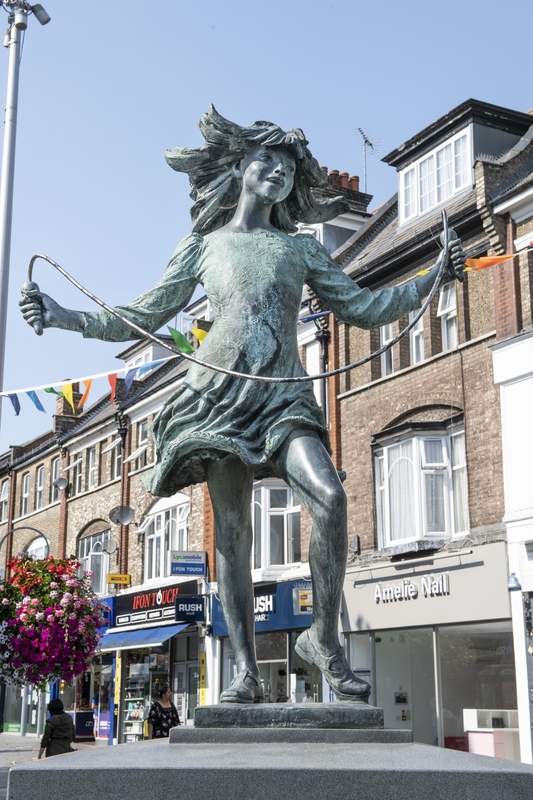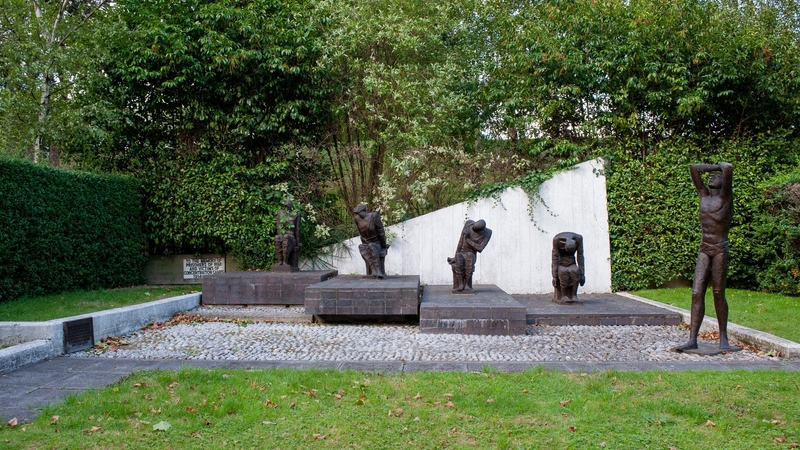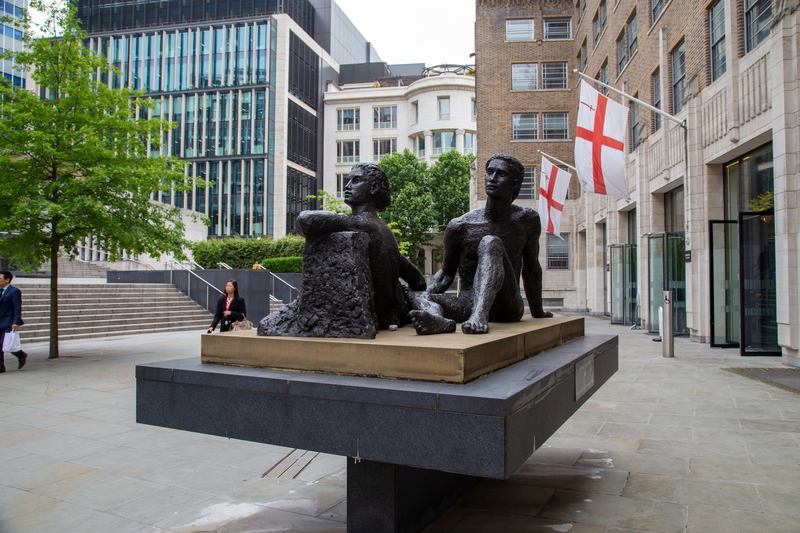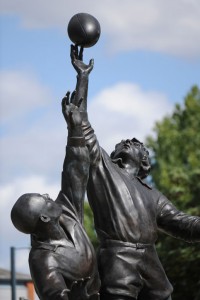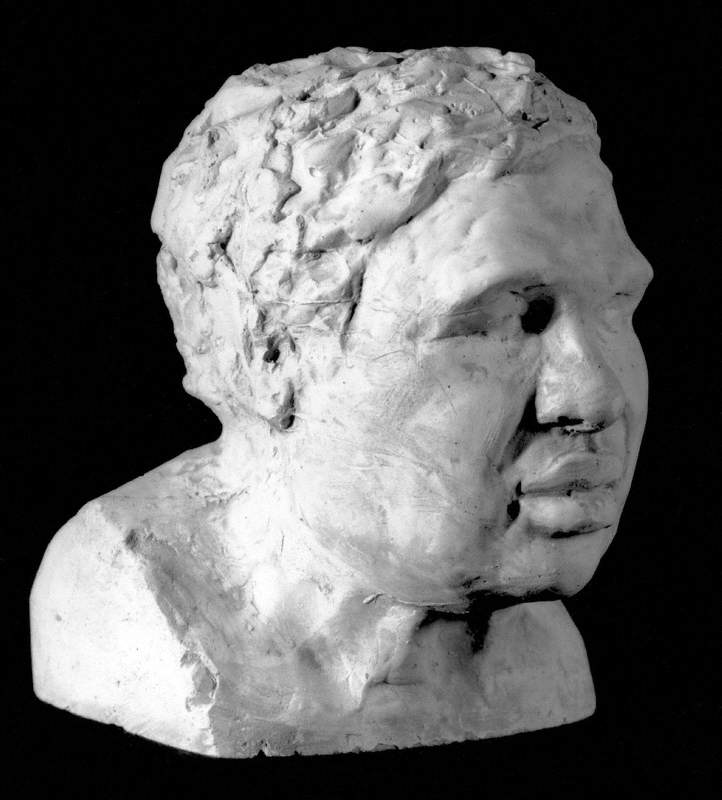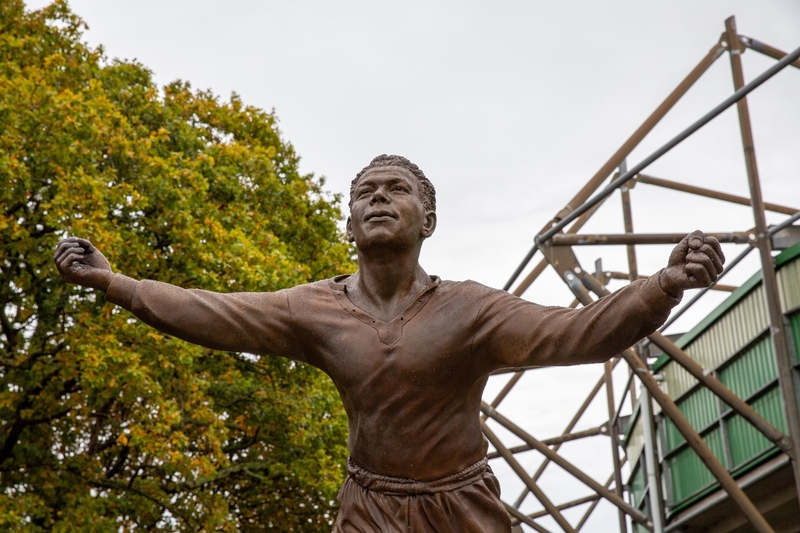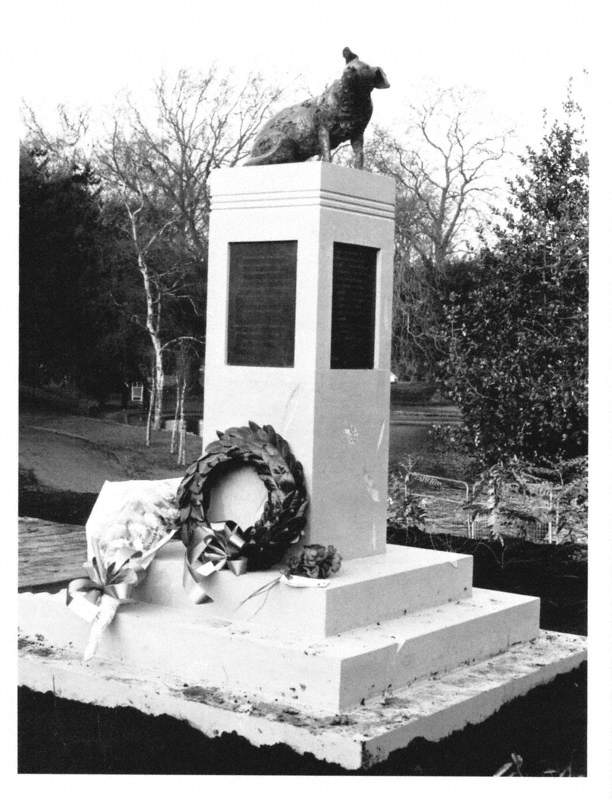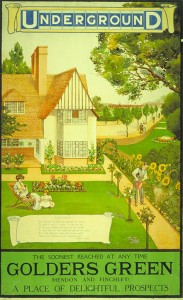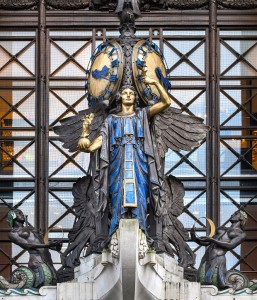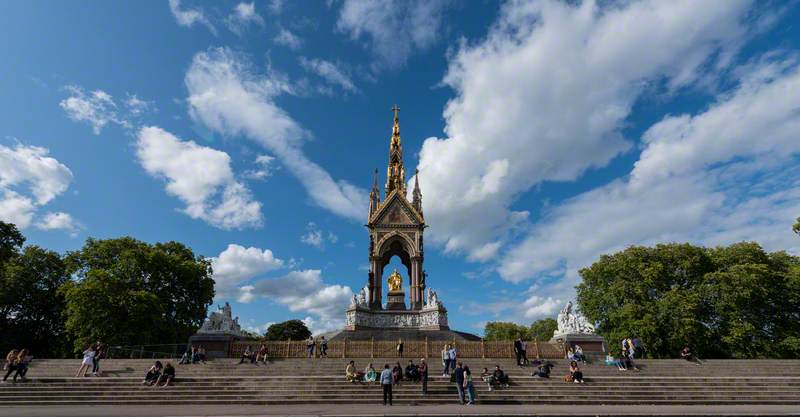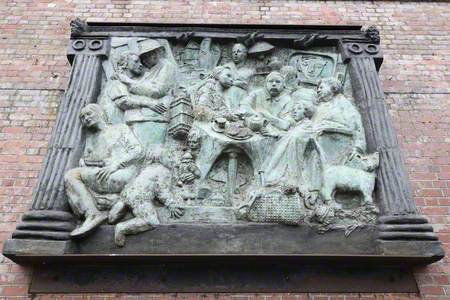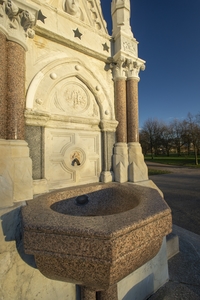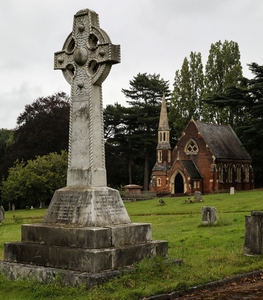Since 2018, 61 dedicated volunteers have given their time and energy to the enormous task of recording public artworks in London, as part of Art UK's sculpture project. To date, over a thousand sculptures and monuments across the capital have been photographed, logged and researched. The artworks are often hiding in plain sight in our parks and open spaces, on our street corners, and in housing estates, high streets and shopping precincts.
Wellington Arch and Quadriga
1825–1912
Adrian Jones (1845–1938) and A. B. Burton (active 1874–1939) and Decimus Burton (1800–1881) 
Capturing London's public art has been a significant challenge, not only because of the complex nature of the artworks, added to our street scene over centuries, by local authorities, philanthropists, communities, businesses and successive redevelopment, but also because Art UK's recording project has been conducted during one of the most challenging periods in modern times, the COVID-19 pandemic.
Our public sculpture project relies on a dedicated team of volunteer photographers and researchers. When the pandemic took hold in 2020, many volunteers, either through age or medical conditions, found themselves shielding. Those that were students left the city to return home to other regions or countries to be with family at this difficult time. Others who fitted in their volunteering around working in the city were no longer travelling into work. Restrictions forbade non-essential travel.
Art UK has a responsibility to ensure that we keep our volunteers safe and comply with guidance. As society has reopened, however, we have been happy to see volunteers keen to pick up their tasks and get back on the recording trail, taking advantage of the quieter streets to capture as much as possible of this great city.
We recently asked our London volunteers about their experiences of recording sculpture and what they have learned from taking part. All volunteers agree that having the opportunity to take the time to view the city in this way was a positive and enriching experience.
Andy Smith said: 'It was very rewarding, in that many of the areas I was photographing sculptures in were familiar to me from childhood. I now appreciate much more about the heritage of the areas I grew up in.'
Juliet Ferguson added that it was like 'a treasure hunt for sculptures in parts of my hometown that I've never visited. It was especially appreciated when coming out of lockdown as it gave a purpose to the walks.'
Vincenzo Albano thoughtfully remarked: 'Being in touch with important and historical works of art has been an eye-opener and educational on many levels – artistic, cultural, historical. Before photographing I have always taken the time to investigate the history and inspiration behind sculptures.'
Identifying what exists in each borough can be difficult, especially as we are building comprehensive lists of sculptures for the first time. What is an important object in one borough may not be in another. It's a personal landscape, particularly for those areas of the city away from the traditional tourism and visitor routes. It is important for us to capture the local stories as much as the 'headliners'.
As Juliet said: 'There was difference in the character of the sculpture in the boroughs I took – in Hounslow a lot of the sculptures were airplane related, in addition to many, many drinking fountains. Richmond had more classical and historic sculpture, while in Hammersmith and Fulham there was a lot relating to its industrial past, especially along the river.'
Many of our volunteers have covered areas outside of London, as well as multiple boroughs, and consistently remarked at the positive situation of being able to visit a wide range of public art in close proximity to each other, literally walking through history.
There are, of course, challenges that come with city photography and all volunteers have stories of interacting with the public while recording public sculpture. Overwhelmingly people are interested. They notice you photographing and looking at a sculpture, and they see it too!
Andy Smith reflected that 'people were genuinely interested in what I was doing and were able to add their own stories, which added further context and validity to photographing these important artworks.'
Juliet added: 'I had no problems at all – the opposite in fact – once I'd explained what the project was people were only too happy to help and allow access or information.'
The sheer volume of redevelopment is changing the face of many areas, so locating and capturing objects that have been re-sited, removed or lost can be a challenge – as Colleen Rowe Harvey puts it: 'city renovation and redevelopment meant that many were gone, or hard to find,' while Andy found that 'a number of the sculptures had been relocated due to rebuilding/refurbishment works, these being either enclosed in scaffolding/hoardings or simply moved away.'
The remit of the project is quite broad and includes a wide range of traditional, contemporary, classical sculpture and statuary, heritage objects and murals, markers and friezes. Some boroughs reflect specific roles or history.
Nick Hodgson said: 'I photographed 33 sculptures in the Borough of Islington. It reflected a cross-section of ages, including Victorian statues, war memorials, football statues at the Emirates Stadium, and the very latest statue (Street Cat Bob on Islington Green).'
While Nick Bowman added: 'The scope varied enormously from war memorials to artistic works to busts of Churchill... and a wide variety of materials from stone to wood to glass. Some were place markers helping to define an area.'
Juliet photographed all sorts, 'from George Washington to an airplane propellor and many, many drinking fountains,' whereas in south London, Andy photographed 'memorials commemorating trades, conflict, religious figures, and notable disasters. Many of the sculptures also have maritime connections, being close to the River Thames.'
Volunteer Sarah Rider, who photographed sculptures in the London Borough of Harrow, said: 'My favourite piece of sculpture in Harrow is Katie – an iconic landmark piece by James Butler, unveiled in 1987 in Harrow's shopping area to celebrate the street's pedestrianisation. It's a sculpture that everyone in that area will know of; whether they walk past it regularly without giving it much thought, or use it as an easily recognisable meeting place. Katie represents simple joy, freedom and life. Butler, a Warwickshire artist and sculptor, based his design on his own daughter, when he saw her playing in the garden.'
In the Borough of Hammersmith and Fulham, Juliet Ferguson said that 'the airline propeller certainly stood out amongst all the drinking fountains and was a reminder that Hounslow's airline heritage stretches much further back than Heathrow. It was also a surprise to find the life-size Capability Brown by the Thames in Hammersmith.'
Lancelot 'Capability' Brown (1716–1783)
2017
Laury Dizengremel (b.1954) 
She continues: 'The sculptures that line the Thames along Fulham Reach that are a reminder of the areas almost forgotten industrial past. A local resident was happy to share his knowledge of them when he saw me taking pictures.'
In Redbridge, Nick Bowman was particularly struck by 'the anti-air war memorial in Woodford Green... commissioned by Sylvia Pankhurst, perhaps because it seems so significant yet is hidden away and even though I went to school just 100 yards away it had never been mentioned.'
Nick also liked the Thomas John Barnardo memorial, now sitting firmly in the middle of a housing estate by the Barnardo's HQ. The 'village' has been built around it and hopefully it will inspire residents to think about his kindness.
In Bexley, Andy Smith told us that 'a surprising find was a Coal Tax Post in Crayford, which stood proudly and freshly painted in the middle of a new housing estate, it was very pleasing that this heritage had been respected.'
Colleen Rowe Harvey, photographing sculptures in the Borough of Camden, said that her 'favourite sculptures were those that I was able to return to again and again as I could watch and document at different times of the day in different seasons. These sculptures became more than a piece of stone, wood, metal or concrete, they became familiar and part of my present.'
The Ready Money Drinking Fountain
1869
Robert Keirle (1837–1914) and Henry Ross (active 1869) 
Nick Hodgson, photographing in the Borough of Islington, highlighted a sculpture that he never knew existed, even though he has lived in the Borough for over thirty years: 'Tucked away behind Upper Street (one the main arteries running through Islington), and close to the world-famous Almeida Theatre, is a small public garden with a frieze Commerce Welcoming All Nations, in Battishill Street Gardens. Sculpted by Musgrave Watson in 1842, it formed part of a Hall of Commerce in Threadneedle Street (in the city) until the hall was demolished in 1922. The stonework was salvaged by Sir Albert Richardson and remained in pieces at London University. In 1974 these were given to Islington's Borough Architect who replaced the missing sections to make the frieze a feature in the then-new Battishill Street Gardens.'
Commerce Welcoming All Nations
1842 & 1975
Musgrave Lewthwaite Watson (1804–1847) 
In Greenwich, our volunteers found the 'Princess Alice' Memorial in the Old Woolwich Cemetery very poignant. The monument commemorates the worst ever disaster on the River Thames when in September 1878 approximately 550 people lost their lives when their pleasure steamer Princess Alice collided with the collier Bywell Castle.
They were also struck by the haunting and impactful Prisoner of War Memorial by Fred Kormis in the Borough of Brent, which depicts the stages of captivity.
In Southwark, Andy Smith told us that he 'enjoyed the more elevated sculptures, at the tops of building facçades, The ones located on the former Passmore Centres were particularly beautiful – Truth Holding the Mirror up to Nature in Borough Road and the architectural sculpture and mermaid corbels on the façade of the former public baths in Wells Way were the stand-out ones for me.'
Truth Holding the Mirror up to Nature
1897–1899
Charles John Phipps (1835–1897) and Arthur Blomfield (1829–1899) and Burmantofts Pottery / Leeds Fireclay Company (founded 1845) 
As well as the volunteer photographers, there are several volunteers who support the project by working many hours meticulously gathering the data behind the sculpture. It is an essential part of the process of digitising the artworks.
Mae, who researched public sculpture in the City of London, said: 'It was a great learning experience, with each entry there was always something new to learn. What amazed me was the number and variety of reliefs and panels.
There were many significant sculptural/architectural works that stood out, for example, Sir Charles Wheeler's architectural sculpture at the Bank of England; Susan Durant's The Faithful Shepherdess statue at Mansion House, façades of buildings with architectural decorations, historic sculptural items in churchyards and on the streets of London, old pub signs, statues of kings, queens and other notable personalities, monuments, reliefs, street furniture, war memorials etc. I particularly enjoyed coming across works by women sculptors and architects that stood out as there were much fewer of them at that time in a male-dominated field.'
Our work to record London's public sculpture continues with new artworks being added to the database every week. In due course, we hope to work with the 32 London boroughs and the City of London to create online trails and Curations to highlight the wealth of free-to-access public art available to everyone.
Art UK is very grateful to the Mayor of London's office which has provided funding to undertake public sculpture digitisation in London.
Tracy Jenkins, Art UK Public Sculpture Officer





